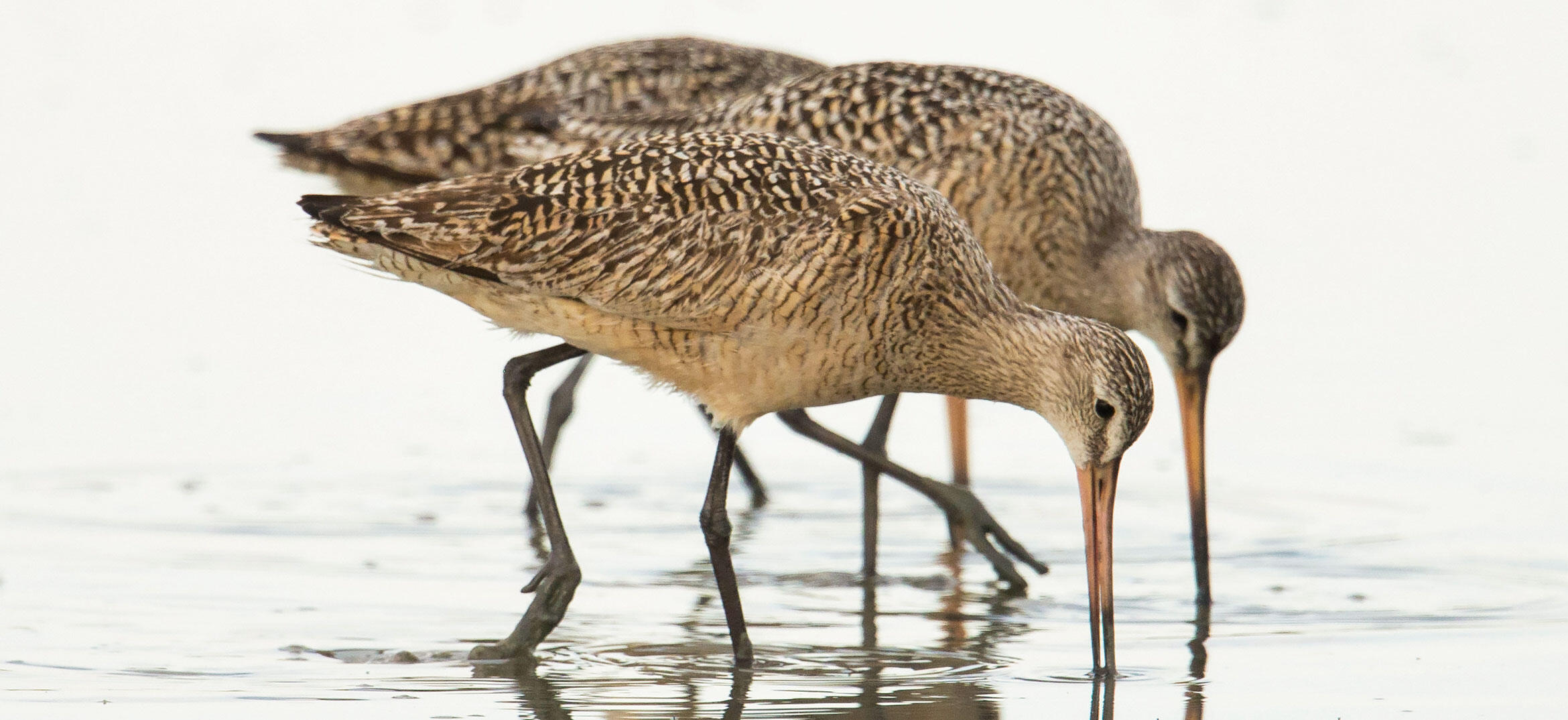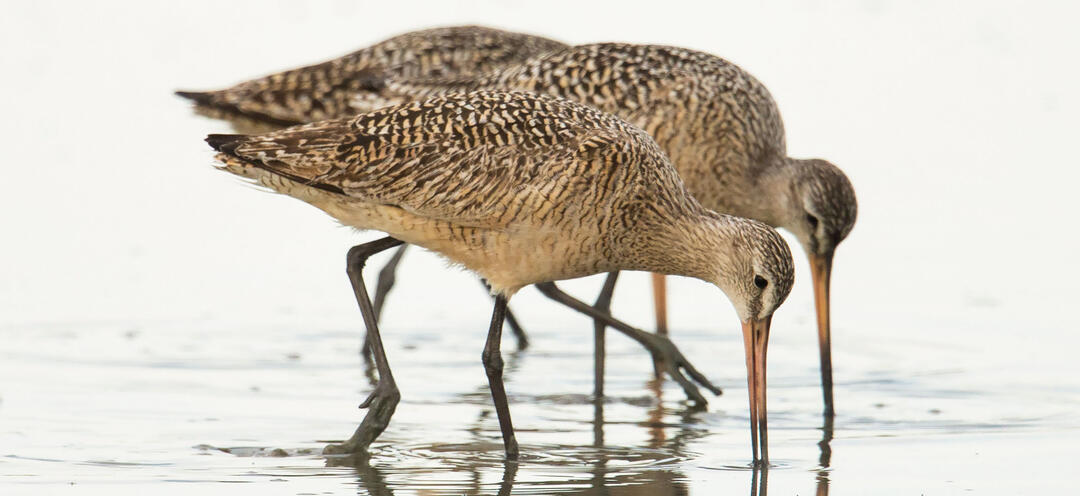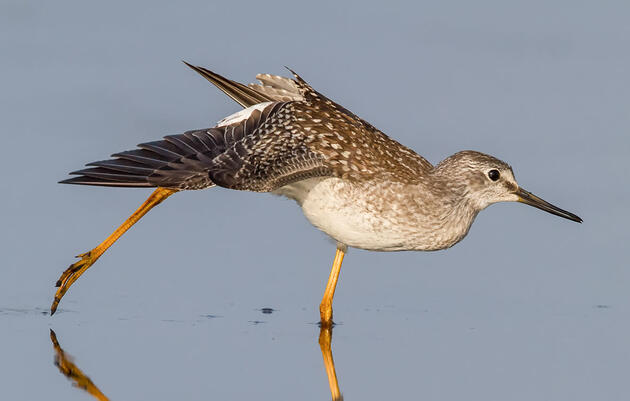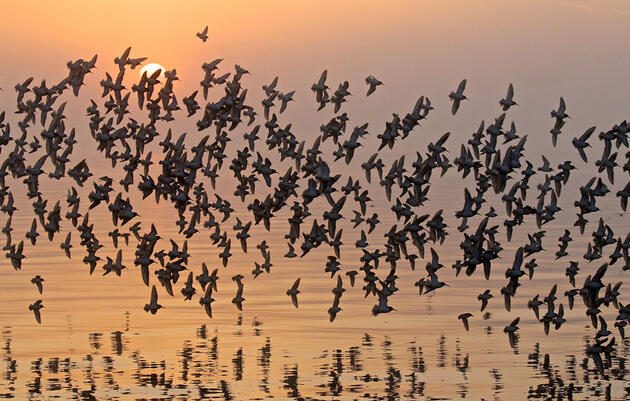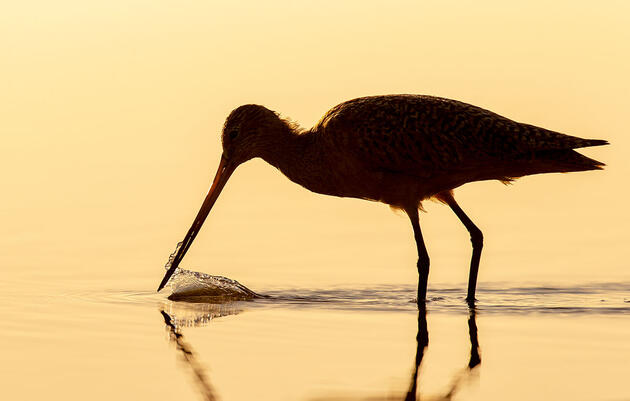Great Salt Lake has tremendous importance as habitat for shorebirds. Forty-two species of shorebirds have been confirmed there. On May 21, 2021, Utah Governor Cox declared 2021 the “Year of the Shorebird” in Utah. In celebration, each month for the rest of the year, longtime shorebird enthusiasts Ella Sorensen and Max Malmquist will highlight some of the lesser-known shorebird species that typically do not receive as much attention as the boldly patterned American Avocets and Black-necked Stilts.
Migration
The coming and going of birds as the seasons change has long intrigued humans. Early theories included swallows hibernating in the mud, cuckoos changing into hawks, hummingbirds riding on the backs of geese, and birds flying to the moon.
A traveling bird, flapping wild and free as it follows the pathways of the sky, often fans the flames of human desires.
Oh, if only I could fly high and unrestrained like a bird, flapping and gliding along, gazing down upon the earth below.
Or it ignites the curiosity of anyone with a pondering imagination.
Here stand I, stationary, feet planted firmly upon the ground while it is “motion on wings,” passing over above me. From whence is this bird coming and to where is it bound?
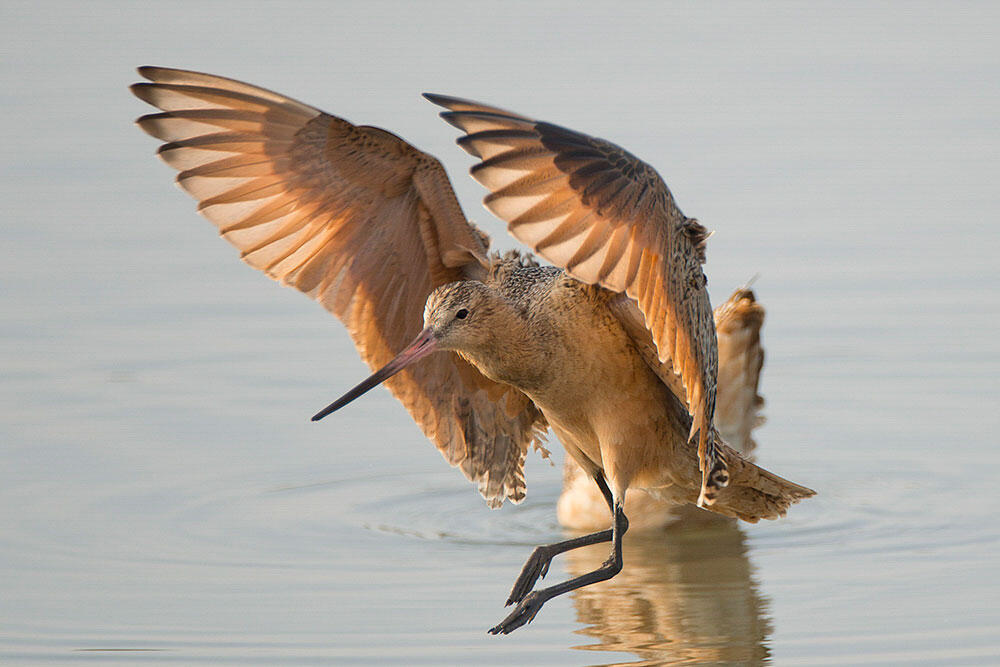
Let’s reverse the reel of time to journey back to August 6, 2006, and join Marbled Godwit 61987 at Bear River Migratory Bird Refuge on Great Salt Lake.
Godwit 61987
Godwit 61987 was one of 13 Marbled Godwits at the refuge equipped with miniature solar satellite transmitters by Bridget Olson as part of her master’s degree between 2006 and 2008. Thanks to Bridget’s research, when Godwit 61987 takes flight we are not left behind pondering, but can tag along on his spectacular migratory path for the next 406 days.

The critical importance of Great Salt Lake to migrating Marbled Godwits has been a sleeper, mentioned scarcely (if at all) in earlier migration range accounts. Only recently has awareness of its significance slowly stirred, finally awakening to a full recognition of its true status.
From 1989 to 1995, Point Reyes Bird Observatory coordinated shorebird surveys in wetlands throughout the Intermountain West, examining spring and fall shorebird distribution. It found that 84 percent of all Marbled Godwits observed in the region in spring and 86 percent of Marbled Godwits in the fall were at Great Salt Lake. The results of this survey were published by W David Shuford, Gary W Page, and Lynne E Stenzel in 2002. This report, combined with the Utah Division of Wildlife Resource’s five-year shorebird survey, led to the recognition that Great Salt Lake is the largest interior staging area for Marbled Godwits in North America.
To Mexico
After being tagged on August 6th, Godwit 61987 lingered around Great Salt Lake wetlands for 80 days along with thousands of other godwits, molting and foraging to build fat reserves to fuel their southward journey.
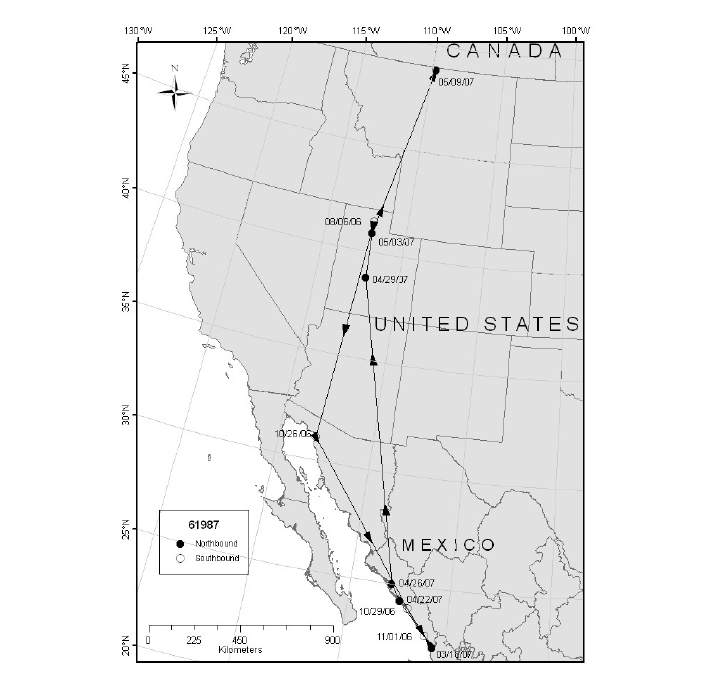
On October 24th, giving answer to that compelling summons that humans cannot hear, he departed, leaving Great Salt Lake behind to fly 671 miles to the coast of Sonora, Mexico, 60 miles south of where the Colorado River flows into the Gulf of California.
He followed an overland route through Utah and Arizona. All eight tagged godwits that provided data followed this overland route, some veering slightly into parts of Nevada and California. All eventually converged along a Colorado River corridor.
Three days later, our bird was on the move once again, flying down the Mexican mainland coast 584 miles for another three-day stopover in the coastal wetland Playa Ceuta near La Cruz, Mexico.
Then, with a final 105 miles on the wing, his long journey ended on November 1, eight days after he departed Great Salt Lake, as he settled in for 137 days at Laguna Grande, part of a large coastal lagoon system in western mainland Mexico.
On March 18, 2007, Godwit 61987 got the urge to meander a bit farther south, flying 40 miles to spend 21 days at another coastal wetland wintering location in the Mexican state of Nayarit, an area known as the Marismas Nacionales. He was the only godwit in the study that wintered at two locations, his migratory flight the longest, and his winter residency the most southern. Other tagged godwits wintered as close to Great Salt Lake as the Salton Sea in California, with most at scattered locations in Mexico along both the Pacific and Gulf of California coasts. Godwit 61987’s winter residency lasted 158 days, somewhat shorter than the average 174 days.
Godwit 61987 is a classic example of a hopping migration strategy. Some birds jump, flying long distances, sometimes thousands of non-stop miles, highly dependent on a few critical key sites that fuel migration. Others skip, flying medium distances of a thousand or so miles. Hoppers like Marbled Godwits migrate over shorter distances, often a few hundred miles. Shorter distances between stops translate to less need to pack on heavy fat reserves, and the bird flies lighter.
The magic, mystery, and beauty of migration. From where comes that compulsion that prompts an eleven-ounce male shorebird to suddenly leave behind a fertile wetland deep in Mexico, to expend the energy and face the arduous hazards of a 1,850-mile voyage north to nest and raise his young?
To Great Salt Lake
On April 22, beckoned by forces we do not fully comprehend, Godwit 61987 gave answer and spring migration was initiated. Of all tagged godwits, he was the last to head north. Once again, he hop-scotched north for 172 miles, over flying the place where he had spent four and a half months wintering to land—as he did on his southward path—just for three days at Playa Ceuta. He then hopped another 67 miles up the coast to the Bay of Santa Maria.
The signal was next picked up three days later 933 miles north, far inland in the Great Basin near Glenwood, Utah. This may seem like an odd choice for a water-dependent bird. Utah is the second driest state and most of west-central Utah consists of a wide-ranging dry desert of sagebrush and piñon/juniper. But Glenwood sits near the Sevier River, a rare river running through this arid landscape. Glenwood is a small agricultural area crisscrossed by canals with names like Vermillion, Richfield, Venice, and Sevier Valley. Like finding a pin in a haystack, survival for godwits is contingent upon instincts that direct a bird flying through a desert to locations of sparse, scattered water.
Godwit 61987 stayed near Glenwood for at least 24 hours before flying 141 miles to arrive on May 3 at the south end of Great Salt Lake. On the whole, the tagged godwits started northward migration between April 12-22 and made 1-3 stops with flights lasting 3-11 days before arriving at Bear River Migratory Bird Refuge. Of the tagged godwits, Godwit 61987 started last (April 22), made the most stops (three), and took the longest (11 days).

To Montana
Typically, shorebirds migrating through Great Salt Lake wetlands in spring are more hastily bound for their nesting location than in autumn when residency at the lake is longer, less hurried, and—for some species like godwits—a time and place for molting. Godwit 61987 left Great Salt Lake on May 3, flying 537 miles to arrive five days later at his breeding grounds in Montana near the Canadian border.
Marbled Godwits nest at only three known locations. Two are located in northern tundra areas, the third a mid-continental prairie site in south-central Canada and north-central United States. This area accounts for 98 percent of the total breeding population. All godwits tagged at Bear River Migratory Bird Refuge nested scattered about at this mid-continental location: five in Canada, two in North Dakota, and four—including Godwit 61987—in north-central Montana
The clutch size for most Marbled Godwits is four eggs. A chick, pipping fresh from its egg enclosure, emerges into the world as a tiny, naïve, inexperienced downy feathered ball with short legs and bill. And yet, through the marvels of migration, embedded deep in its genes lies the knowledge that will guide this untraveled novice on an ancestral path to and then back from wintering grounds in Mexico.
Godwits remain on the breeding grounds just long enough to produce the next generation and then become transitory once again. Tagged godwits averaged 74 days on the breeding range.
The last transmittal for Godwit 61987 at this Montana breeding site was June 26.
Back to Bear River Migratory Bird Refuge
Due to technical difficulties, Godwit 61987 was not located again until July 14 back at Bear River Migratory Bird Refuge where this saga began. Once again, characteristic of his species, he lingered on the northeastern arm of Great Salt Lake until at least September 16. Then, when the transmitter fell silent, our 406-day fly-along adventure with Godwit 61987 concluded.
With the connection severed, we are thrown back once again to the pondering state of speculative questions without definitive answers. What happened to Godwit 61987 after September 16? Was he alive or dead? Did the solar transmitter malfunction? Did the transmitter fall off and sink into the mud, obscuring its signals? Was the godwit eaten, transmitter and all, by a predator?
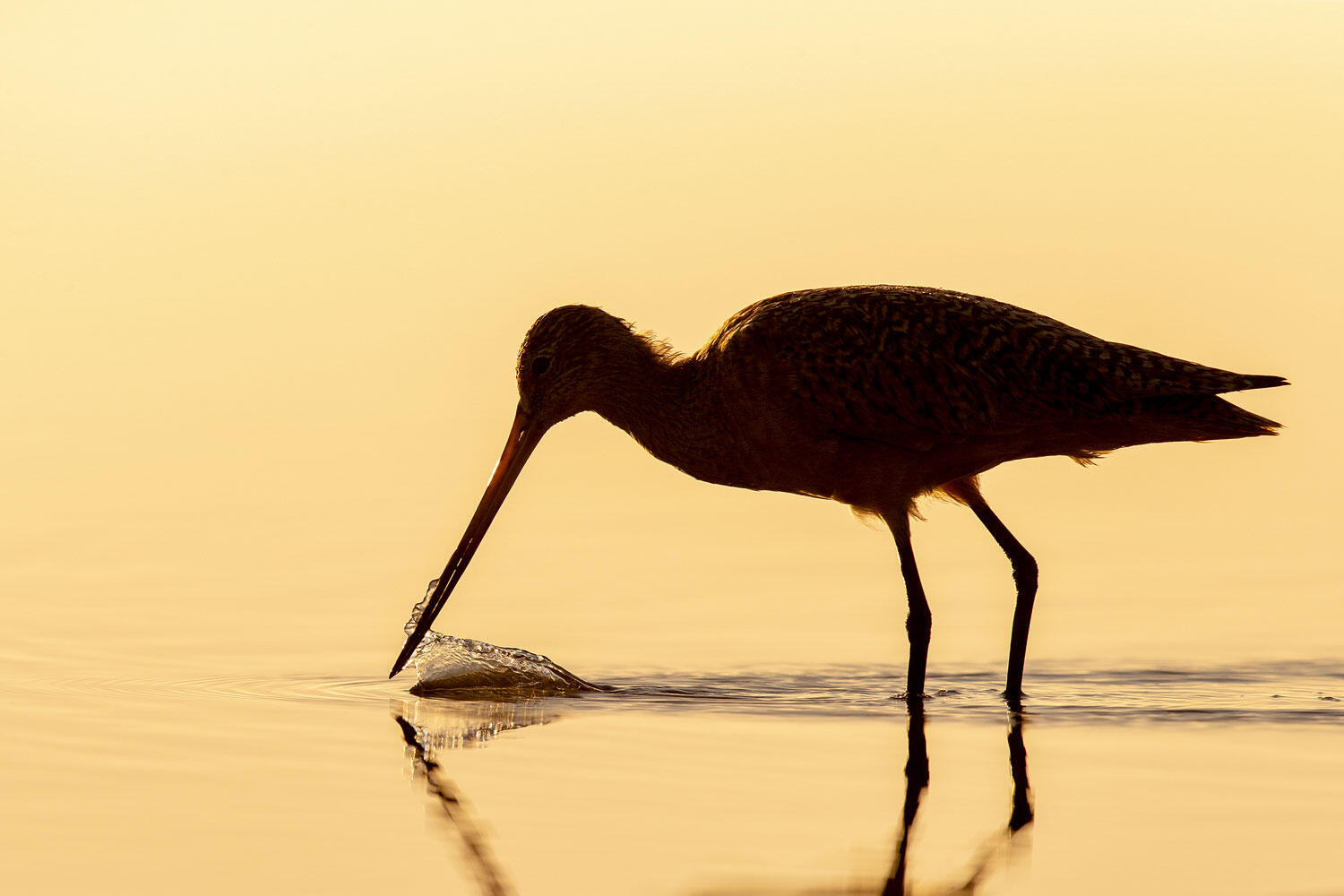
Bridget Olson’s research was much more comprehensive than presented here and filled some of the gaping gaps in the biogeography of Marbled Godwits. Focusing on and highlighting a small part of her work—Godwit 61987 and a few of his kindred tagged at Bear River Migratory Bird Refuge—offers a spectator’s glimpse into the marvel and mystery of Marbled Godwit migration.
To see a map of all the locations that the godwits in Bridget’s study visited, click here and click View>Show in Map.
We would like to thank Bridget Olson, Brian Tavernia, John Neill, Mike Malmquist, Ann Neville, Jennifer Speers, Marcelle Shoop, Heather Dove, Sarah Davidson, and Heidi Hoven for reviewing and making helpful comments.

